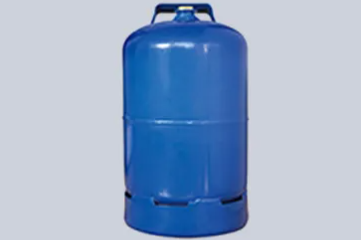Understanding LPG Cylinder Installation and Maintenance: A Comprehensive Overview
Liquefied Petroleum Gas (LPG) cylinder plays a crucial role in various applications, from residential cooking to commercial heating. Proper installation and regular maintenance of LPG cylinders are essential for ensuring safety, efficiency, and optimal performance. This comprehensive guide aims to provide an overview of LPG cylinder installation and maintenance, covering key considerations and best practices for a seamless experience.

Selecting the Right Cylinder:
Before installation, it is important to select the appropriate LPG cylinder for your specific needs. Consider factors such as cylinder size, capacity, and usage requirements. Consult with your gas supplier or LPG professional to determine the suitable cylinder that aligns with your consumption patterns and available space.
Location and Safety:
Choose a well-ventilated and secure location for installing LPG cylinders. The installation area should comply with local safety regulations, including proper ventilation to prevent the accumulation of gas. Ensure that the location is away from flammable materials, ignition sources, and areas with high foot traffic.
Cylinder Installation Process:
LPG cylinder installation should be carried out by a certified professional or authorized gas technician. The installation process typically involves the following steps:
a. Cylinder Placement: Position the cylinder in an upright position, either in a vertical or horizontal orientation, as recommended by the manufacturer and local regulations.
b. Regulator Connection: Connect the pressure regulator to the cylinder valve using a suitable wrench, ensuring a secure and leak-proof connection. Follow the manufacturer's guidelines and torque specifications for proper installation.
c. Hose Connection: Attach the gas hose to the outlet of the pressure regulator, taking care to use appropriate hose clamps or fittings to ensure a tight and secure connection.
d. Leak Testing: Conduct a thorough leak test by applying a solution of soapy water to all connections, including the cylinder valve, regulator, and hose connections. Check for the formation of bubbles, which indicate a gas leak. If a leak is detected, immediately rectify the issue before proceeding.
Safety Precautions and Emergency Shut-Off:
During the installation process, it is crucial to familiarize yourself with the emergency shut-off procedures. Locate and label the emergency shut-off valve or isolation point for quick and easy access in case of emergencies or gas leaks. Educate household members on these procedures to ensure everyone's safety.
Regular Maintenance:
Regular maintenance of LPG cylinder is vital for their optimal performance and longevity. Follow these maintenance practices:
a. Visual Inspection: Conduct a visual inspection of the cylinder, regulator, and hoses for any signs of damage, corrosion, or wear. Replace any worn-out or damaged components promptly.
b. Valve Operation: Check the operation of the cylinder valve regularly. Ensure it opens and closes smoothly without any obstruction or resistance. Report any valve-related issues to a gas technician.
c. Pressure Testing: Periodically conduct pressure tests to ensure the integrity of the system. This is typically done by professionals using specialized equipment to check for leaks or pressure abnormalities.
d. Hose Replacement: Replace gas hoses as recommended by the manufacturer or gas supplier. Over time, hoses can deteriorate and become prone to leaks, so regular replacement is essential.
Professional Inspection and Servicing:
Engage the services of a qualified gas technician for professional inspection and servicing of the LPG system. This should be done at regular intervals or as per local regulations and guidelines. Professionals can conduct comprehensive checks, identify potential issues, and ensure the system's safety and compliance.
User Education and Awareness:
Educate yourself and household members on LPG gas cylinder installation, maintenance, and safety practices. Promote awareness about proper handling, emergency procedures, and the signs of gas leakage. Encourage everyone to report any unusualsmells, hissing sounds, or safety concerns to the appropriate authorities.
Conclusion
Understanding the process of LPG cylinder installation and maintenance is essential for safe and efficient usage. Selecting the right cylinder, ensuring a proper installation location, following the correct installation process, conducting regular maintenance, and seeking professional assistance when needed are crucial steps to ensure the safety and optimal performance of LPG cylinders. By adhering to these guidelines and best practices, users can enjoy the benefits of LPG while minimizing the risk of accidents, gas leaks, and other hazards. Remember, prioritizing safety and adhering to local regulations and guidelines are key to a seamless and secure LPG cylinder installation and maintenance experience.



